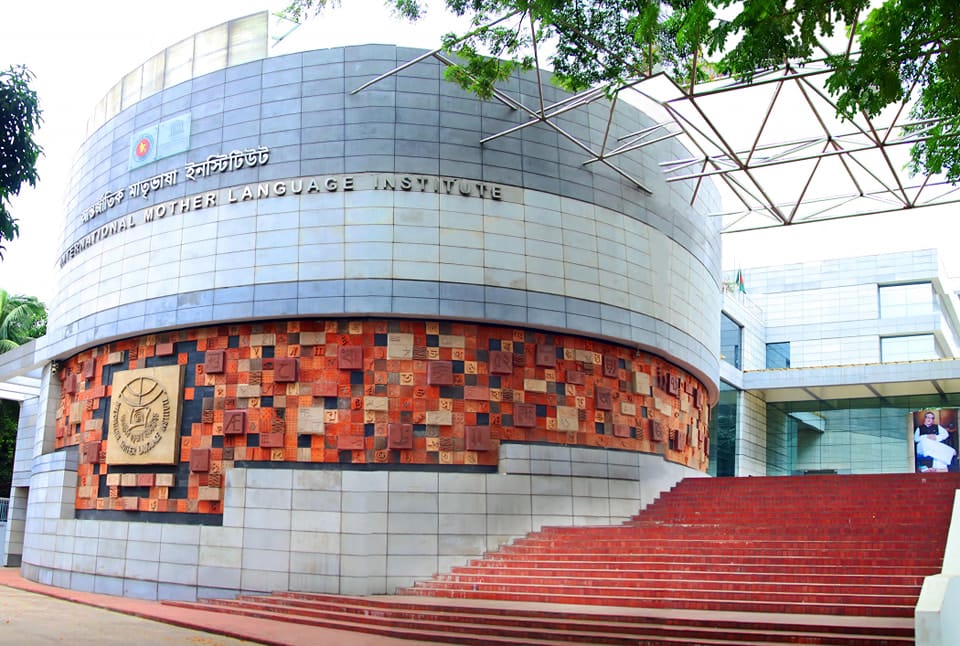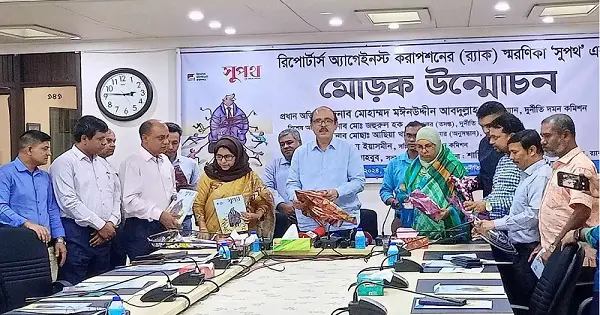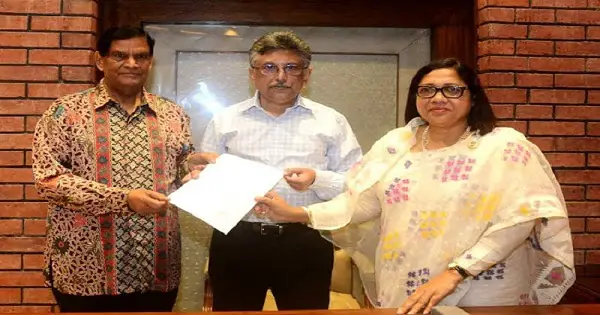Bengali gave his life on February 1, 1952 to get the right of his mother tongue. Honoring February 11, the world is observing the day as International Mother Language Day. The International Mother Language Institute was established at Segunbagicha in the capital to research the mother tongues of different countries of the world. This year marks 24 years of establishment of the institution. Those concerned say that the work of the organization could not progress smoothly from the beginning of the journey. The institute has little influence in the research of globally endangered languages. The institution has become busy with various activities including research, publication of books, creation of museum. However, as an international quality institution, which was supposed to achieve the standard and develop communication relations with the outside world, the institution could not meet the expectations.
The Matrbhasha Institute has completed the work of publishing ‘Matrabhasha Pedia’ or Matrbhasha Encyclopaedia. The encyclopedia is being published in Bengali in five volumes and in English in five volumes. Prime Minister Sheikh Hasina will inaugurate this mother tongue encyclopedia today on February 21 on the Great Martyr’s Day and International Mother Language Day. The encyclopedia includes all the mother tongues of the world. There is enough information about the language.
In this regard, the director general of the International Mother Language Institute, Professor Dr. Hakim Arif said in the light of time, this encyclopedia has been published so that Bengali speakers around the world can be aware of their mother tongue Bengali.
International Mother Language Institute is primarily a research institute. Its main aim is to study all the mother tongues of the world. Many of the world’s surviving mother tongues are endangered. Many languages have already become extinct. The scope of work of Mother Language Institute is wide. The institute is supposed to work on language standardization, research and preservation of endangered or extinct languages and provision of mother tongue education to children. Several languages have been identified as endangered in Bangladesh. The number of people using minority languages is decreasing. If these speakers disappear, the language will also disappear. 14 languages such as Bom, Kol, Chak, Sho, Khasi, Kora, Pangkhua have emerged as endangered in the scientific language survey.
Linguists, educationists and related people say that to save the language, the primary education of the country’s ethnic groups must be ensured in the mother tongue. Those who do not have a written alphabet; Scripts for those languages need to be developed. Languages should not be preserved and kept in museums, the use of those languages should be increased. They demanded language policy and language plan now.
UNESCO has specified four stages between safe (not endangered) and extinct languages. These are Not Protected, Critically Endangered, Critically Endangered, Critically Endangered languages. According to UNESCO, there are about 6,000 languages in the world. Of these, 2,500 are endangered, and one language is dying every 14 days. In 2014, the International Mother Language Institute conducted a scientific language survey on the languages of Bangladesh. According to that survey, apart from Bengali, 43 languages exist. 14 ethnic languages are identified as endangered. The endangered languages of Bangladesh are Bam, Kol, Chak, Sho, Khasi, Kora, Pangkhua, Kharia, Saura, Koda, Mundari, Malto, Kanda, Khumi, Rengmitcha, Khiang, Laleng or Patra and Lusai.
This study was conducted under the leadership of Professor Sourav Sikder, Department of Linguistics, University of Dhaka. Saurabh Sikder says in the light of time, languages are endangered due to various reasons; Such as low population, lack of practice outside the home, lack of opportunity to use the mother tongue, pressure of the larger nation, all these reasons make the language endangered.
According to the International Mother Language Institute, there are 40 people of Rengmitcha language, 600-700 people of Kada language, 600-700 people of Kanda language, 959 people of Lusai language, 1 thousand people of Kharia language, 1 thousand people of Saura language, 2 thousand 33 people of Laleng or Patra language. People, 2 thousand 274 people of Pankhwa language, 2 thousand 835 people of Chak language, 2 thousand 843 people of Kol language, 3 thousand 369 people of Khumi language, 3 thousand 899 people of Khian language, 8 thousand people of Malto language, 38 thousand 212 people of Mundari language. Only 8 ethnic groups have their own language scripts in the country. Bengali, Chakma, Marma, Tanchangya, Rakhine, Mro, Manipuri, Ahmia. The rest are using Bengali or a modified Roman script. Some communities are also in the process of creating their own scripts.
Linguist Professor Saurabh Sikder also said that all countries including Sri Lanka and Nepal have language plans. Language plan should be formulated in Bangladesh. Languages should not be preserved and kept in museums, the use of those languages should be increased. Mother tongue should be popularized at all levels by state initiative. The real institution for doing these things is the International Mother Language Institute.
On November 17, 1999, UNESCO recognized February 1 as International Mother Language Day, commemorating the great national language movement. On December 7 of that year, Prime Minister Sheikh Hasina announced the establishment of the International Mother Language Institute in Dhaka. He laid the foundation stone of the International Mother Language Institute in 2001. The construction of the building started in 2003 at Segunbagicha in the capital. But due to the change of government, the work stopped for 5 years. Later, when the Awami League government came to power, the construction work started again. In the meantime, up to 7 floors of the planned 12-storey building have been constructed. Two museums have been developed in the Mother Language Institute. Its a language museum. Till now this museum was in temporary stage. Now in full form. There are language samples of 199 countries of the world, detailed data and images of the ethnographic and cultural identity of the population. The museum is open to all.
Prime Minister Sheikh Hasina will inaugurate this language museum on the second floor of the institute today on February 21. The second is an archive of language writing practices. Former Vice-Chancellor of Dhaka University Professor AMS Arefin Siddique said in the light of time, language is dynamic. It is our responsibility to keep the language moving. To keep languages alive, change and evolution must continue. Even if the language is moving, one cannot deviate from the basic grammar.
International Mother Tongue Institute far beyond expectations





